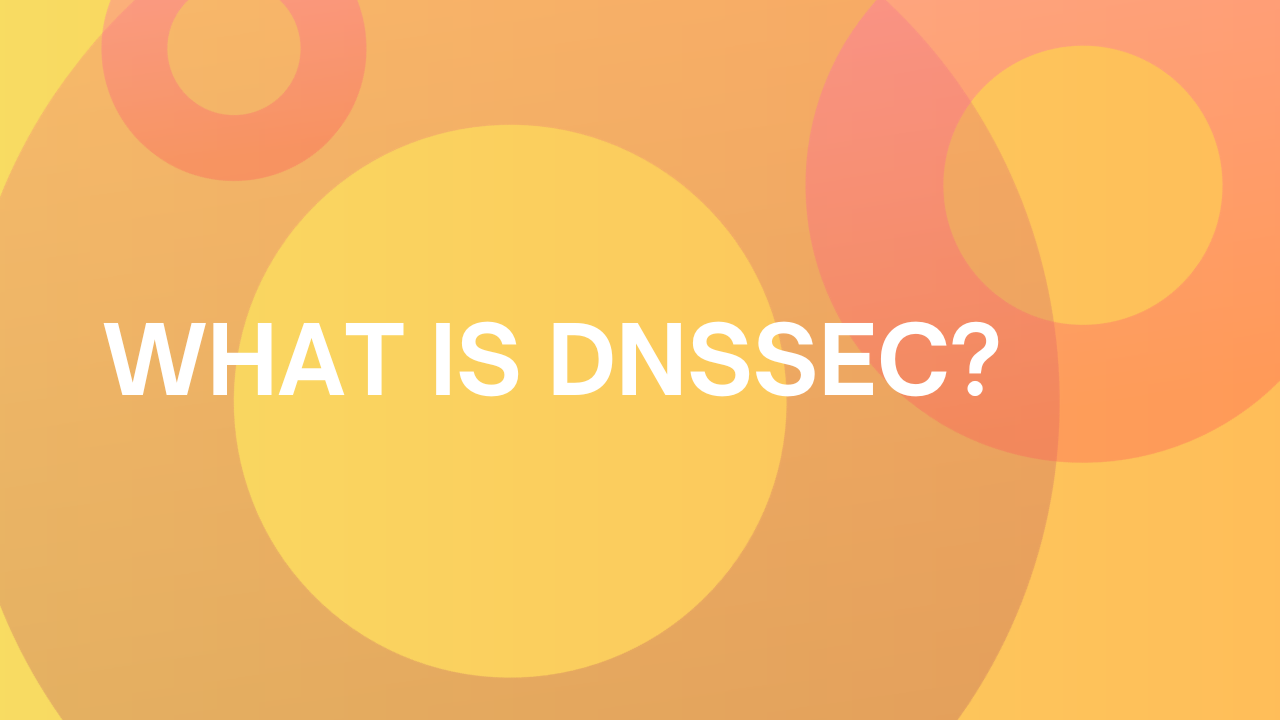
What is Domain Name System Security Extensions (DNSSEC)?
So, you might be asking yourself, what is this DNSSEC thing, and why does it even matter in email marketing?
Well, DNSSEC can help you improve the authentication in DNS by adding cryptographic signatures to records.
What is Domain Name System Security Extensions (DNSSEC)?
The Domain Name System Security Extensions (DNSSEC) is a set of extensions that work alongside the existing Domain Name System (DNS) framework.
Developed by the Internet Engineering Task Force (IETF), these specifications aim to secure DNS data by using system security extensions, which help to improve the overall safety of the Internet.
When it comes to internet protocols, DNS serves as a fundamental building block. It functions as the Internet’s phonebook, converting human-readable domain names to machine-readable IP addresses.
Despite its crucial role, the traditional DNS protocol is susceptible to a number of security risks, such as DNS spoofing and fraudulent DNS data manipulation.
DNSSEC offers a solution to these challenges by providing an additional layer of cryptographic authentication.
With DNSSEC, Internet service providers, organizations, and even individual users can validate DNS data, guaranteeing its authenticity and integrity.
This helps reduce the risks associated with manipulated DNS data, DNS spoofing, and other kinds of cyber attacks that aim to redirect users to rogue or harmful websites.
https://youtube.com/watch?v=MrtsKTC3KDM%3Fautoplay%3D0%26mute%3D0%26controls%3D1%26origin%3Dhttps%253A%252F%252Fwww.www.warmupinbox.com%26playsinline%3D1%26showinfo%3D0%26rel%3D0%26iv_load_policy%3D3%26modestbranding%3D1%26enablejsapi%3D1%26widgetid%3D1
How Does DNSSEC Work?
DNSSEC enhances DNS queries and responses with digital signatures. These signatures are created using cryptographic algorithms and are appended to each DNS record.
When a DNS resolver receives a DNS query, it uses these signatures to verify the authenticity and integrity of the DNS response.
The process involves a ‘chain of trust‘ beginning from the root DNS zone, extending through the top-level domain (TLD), and down to the specific domain’s DNS.
This chain is established through a series of digital signatures and corresponding public keys (DNSKEY records) that are stored in the DNS.
When a DNS resolver receives a DNSSEC-protected query, it checks the digital signature against the public key.
If the signature is valid, it confirms that the response has not been tampered with and is from a legitimate source. This mechanism ensures that the user is directed to the correct IP address, safeguarding against DNS spoofing and similar attacks.
What is DNSSEC Used For?
DNSSEC serves a pivotal role in reinforcing the security infrastructure of the internet. It accomplishes this by providing an extra layer of verification for DNS queries.
Like Transport Layer Security (TLS) and other security protocols, it relies on public key cryptography.
Here, each authoritative name server has a public key and a private key which are cryptographically linked to each other.
The private key is used to sign DNS records, and the signature itself is also stored as part of the DNS record. The public key which is used to validate the signature is also stored in the DNS record.
This means that during a DNS lookup, the public key is retrieved, and it is then used to validate the authenticity of the DNS data by confirming that the digital signature is valid.
If the signature is not valid, the data is discarded, and the user receives an error.
In other words, DNSSEC enhances DNS with two notable features.
The first is data origin authentication which allows a DNS resolver to verify that the data actually came from where it should.
It also adds data integrity protection which enables the DNS resolver to know that the data hasn’t been modified in transit.
Here’s a quick summary:
- Cryptographic verification: Employs digital signatures to check that the DNS records in a response are valid.
- Public key cryptography: Utilizes a system of public and private keys for each authoritative DNS server to encrypt and decrypt DNS data.
- Data origin authentication: Enables DNS resolvers to confirm that DNS data actually originated from the correct source.
- Data integrity protection: Helps DNS resolvers ensure that the DNS data has not been altered in transit.
Why is DNSSEC Important for Internet Security?
DNSSEC is not just an optional add-on, but a crucial element in fortifying the domain name system.
1. Trustworthiness of DNS data
DNSSEC helps to make sure that the DNS data you are receiving is coming from a legitimate source by using cryptographic signatures.
2. Protection against DNS spoofing
DNSSEC effectively protects against DNS spoofing attacks, where an attacker could redirect you to a fake website.
3. Data integrity
With DNSSEC, not only is the origin of the DNS data verified but its integrity is also checked to ensure that it hasn’t been altered during transit.
4. Phishing prevention
By making it more difficult for attackers to redirect users to malicious sites, DNSSEC helps in reducing the success of phishing attacks.
5. Compliance and regulatory benefits
For organizations, using DNSSEC can be a part of compliance with security standards, helping to avoid penalties and improve customer trust.
6. Foundation for future security protocols
DNSSEC serves as a foundation upon which other security protocols and measures can be built, making the internet safer as a whole.
How Do I Turn on DNSSEC For My Domain?
Enabling DNSSEC for your domain involves a few steps:
- Check if your domain registrar supports DNSSEC.
- Generate a DNSSEC key pair (public and private keys) for your domain.
- Add the DNSSEC records to your DNS configuration. This typically includes DNSKEY and DS (Delegation Signer) records.
- Inform your domain registrar of the DS records so they can be added to the parent zone (like .com for example.com).
- Test your DNSSEC configuration to be sure it’s working correctly.
It’s important to carefully follow these steps to ensure DNSSEC is correctly implemented for your domain.
Pros and Cons of Using DNSSEC
| Advantages | Disadvantages |
| Improves security by verifying the authenticity and integrity of DNS data. | Can be complex to implement and manage. |
| Protects against DNS spoofing and cache poisoning attacks. | It may increase DNS query response time due to the additional verification process. |
| Increases trust in internet communications. | Mistakes in configuration can lead to DNS resolution failures. |
How Does DNSSEC Affect DNS Performance?
Implementing DNSSEC has some implications for DNS performance, primarily due to the increased size of DNS responses.
Since DNSSEC adds digital signatures and other cryptographic data to DNS responses, these responses become larger in size compared to non-DNSSEC responses.
This increase can affect the speed at which DNS information is transmitted and processed.
- Increased response size: The digital signatures and additional DNSSEC records added to DNS responses increase the amount of data transferred. This can lead to slightly longer response times, especially over networks with bandwidth constraints.
- Additional processing time: DNS resolvers and servers require extra processing time to validate the cryptographic signatures in DNSSEC-enabled responses. This validation process, while crucial for security, adds a computational overhead that can impact the overall response time.
- Potential for increased query load: In some cases, DNSSEC can lead to an increased query load on DNS servers. For example, when a DNS resolver needs to fetch additional DNSSEC-related records (like DNSKEY or DS records) for validation, it can result in more DNS queries than a typical non-DNSSEC resolution process.
- Caching benefits: On the positive side, once DNSSEC responses are validated and cached, subsequent queries for the same records can be served more quickly. This caching behavior can mitigate some of the performance impacts, especially for popular domains.
How Can I Troubleshoot DNSSEC Issues?
Troubleshooting DNSSEC issues typically involves:
- Verifying that your DNSSEC records (DNSKEY, RRSIG, DS) are correctly configured.
- Checking the ‘chain of trust’ from the root zone down to your domain.
- Using DNSSEC diagnostic tools to analyze the responses from your DNS server.
- Ensuring that your DNS resolver supports DNSSEC.
Regular monitoring and testing are crucial to maintain DNSSEC’s effectiveness.
Is DNSSEC Necessary for My Website or Organization?
While not mandatory, DNSSEC is highly recommended for better security, especially for websites handling sensitive information or transactions.
It adds a critical layer of protection against certain types of DNS attacks, bolstering overall internet security.
Frequently Asked Questions
What is DNSSEC and why is it important?
DNSSEC stands for Domain Name System Security Extensions. It is a set of protocols designed to add an additional layer of security to the DNS. It protects against manipulated DNS data, DNS spoofing, and other forms of cyberattacks by authenticating DNS data using digital signatures.
How do DNS resolvers verify DNSSEC?
DNS resolvers verify DNSSEC through a chain of trust. This chain starts at the root DNS zone and moves down to the authoritative DNS servers for the specific domain. Digital signatures in DNS records are verified against public keys, ensuring the data’s authenticity.
What are DNSKEY and RRSIG records?
DNSKEY records contain the public key used for DNSSEC validation. RRSIG records, or Resource Record Signatures, contain the digital signature for each DNS record. Both are vital for the chain of trust in DNSSEC.
Can DNSSEC protect against all types of DNS attacks?
While DNSSEC offers extra layers of protection, it doesn’t cover all types of DNS attacks. For instance, it doesn’t provide “last mile” protection, the connection between the DNS resolver and the end-user.
What is a parent zone and a child zone in DNSSEC?
In the context of DNSSEC, a parent zone is the higher-level domain (like .com), and a child zone is the specific domain (like example.com). DS records in the parent zone link to DNSKEY records in the child zone, creating a secure chain of trust.
How do I enable DNSSEC?
Enabling DNSSEC typically involves configuring settings in your DNS control panel. You’ll need to generate DNSKEY records and potentially update existing DNS records. It’s crucial to follow best practices to ensure correct DNSSEC deployment.



